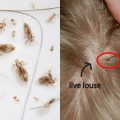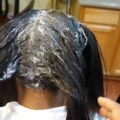Black people is a racialized classification of people, usually, a political and skin color-based category for specific populations with a mid to dark brown complexion. Not all people considered “black” have dark skin; in certain countries, often in socially based systems of racial classification in the Western world, the term “black” is used to describe persons who are perceived as dark-skinned compared to other populations.
This term is mostly used for people of Sub-Saharan African descent and the indigenous peoples of Oceania. Indigenous African societies do not use the term black as a racial identity outside of influences brought by Western cultures.
Race plays a role in the health challenges you are prone to and how likely you are to die from them. Cultural, economic and social factors can also influence health and health outcomes, but the question we will answer in this article is a simple one: Can black people get lice?
Human lice and Man
Human lice are parasitic insects that can be found on people’s heads and bodies, including the pubic area. Human lice survive by feeding on human blood. Lice found on each area of the body are different from each other. The three types of lice that live on humans are
- Pediculus humanus capitis (head louse),
- Pediculus humanus corporis (body louse, clothes louse), and
- Pthirus pubis (“crab” louse, pubic louse).
Only the body louse is known to spread disease.
Lice infestations (pediculosis and pthiriasis) are spread most commonly by close person-to-person contact. Dogs, cats, and other pets do not play a role in the transmission of human lice. Lice move by crawling; they cannot hop or fly. Both over-the-counter and prescription medications are available for treatment of lice infestations.
Reliable data on how many people get head lice each year in the United States are not available; however, an estimated 6 million to 12 million infestations occur each year in the United States among children 3 to 11 years of age.
Where did lice come from?
Historical and archeological evidence shows that human lice infestations were present throughout the world thousands of years ago. Infections carried by body lice, such as epidemic or louse-borne typhus and epidemic or louse-borne relapsing fever, killed millions of people. Infestations of body lice were common in every army during World War I. During this period, outbreaks of typhus, relapsing fever and trench fever occurred in troops, prison camps and among refugees as well as in central Europe, the Balkans and the middle east.
Though epidemic typhus and relapsing fever have disappeared from Europe and most of Asia, infections persist in the mountainous areas of eastern Africa and Central and South America. Furthermore, body lice are reappearing in many countries and trench fever has returned to the United States and Europe, where the infestations are clearly a manifestation of poverty and homelessness.
Neither head lice (Pediculus capitis) nor pubic or crab lice (Pthirus pubis) are vectors of disease, though head lice have been infected in the laboratory with typhus rickettsiae. Pubic lice have never been found to harbor any disease organism, but infestations by this species are frequently associated with the infection of other sexually transmitted diseases (STDs).
Head lice infestations are rampant among school children in both developed and developing countries and large sums are spent on the purchase of medications to treat infestations. It has been estimated that the cost of head lice infestations is $367 million annually in the USA, including sums expended for the purchase of across the counter pediculicides and expenses to school systems. Schools will often send home infested children, insisting that they be treated before returning to class. Often, there is a sense of shame on the part of parents whose children have infestations, as many do not realize how commonly children are infested.
Can Black People Get Lice?
Yes, black people can get infected with lice. In fact, studies have shown that head lice infestations are common in sub-Saharan Africa, where about 80% of the population are blacks.
However, in the United States, infestation with head lice is much less common among African-Americans than among persons of other races. The head louse found most frequently in the United States may have claws that are better adapted for grasping the shape and width of some types of hair but not others.
What Types of Situations Favor the Spread of Human Lice?
Human lice have the potential to transfer from person to person very quickly. The head louse spreads from an infested person to others during direct contact and indirectly when infested items such as hats, scarves, coats, combs, and brushes are shared. School-age children are at risk because they are more likely to share such items, especially under crowded conditions. The pubic louse typically spreads between human partners during sexual intercourse and other intimate contact. Spread of pubic lice via infested bedding and toilet seats can occur, but is not common because pubic lice die within a few hours once they are off a human host.
The body louse spreads during direct contact with infested people or indirectly when infested clothing is shared. Body lice also spread when they leave a person with a high fever and crawl across a surface to infest a nearby individual. Again, the body louse is capable of rapidly building very high numbers and infesting large numbers of people living in conditions that are associated with disasters such as war, hurricanes, and earthquakes when humans are crowded together without access to clean clothes, clean bedding, and periodic bathing.
How Are Human Lice Controlled?
Control of human lice typically involves the use of an insecticide together with the mechanical removal of eggs and lice, plus sanitation of infested articles such as hair brushes, hats, scarves, clothes, and bedding. Insecticides known as “pediculicides” include over-the-counter products and physician prescribed medications. For information on controlling lice and for specific chemical control products refer to the website of the Centers for Disease Control and Prevention (CDC) and discuss control options with a physician. It is essential to apply products exactly as directed on the label AND as directed on the prescription. In addition, it is important to note that eggs of human lice are not killed by insecticides, and a repeat application typically is required in 7-10 days in order to kill newly hatched larvae. Infested clothing and bedding should be washed at a minimum of 130 degrees Fahrenheit and then dried at a high temperature for 20 minutes in a clothes dryer in order to kill lice and eggs. Items that cannot be washed require dry-cleaning. Read: Does Hair Bleach Kill Lice






